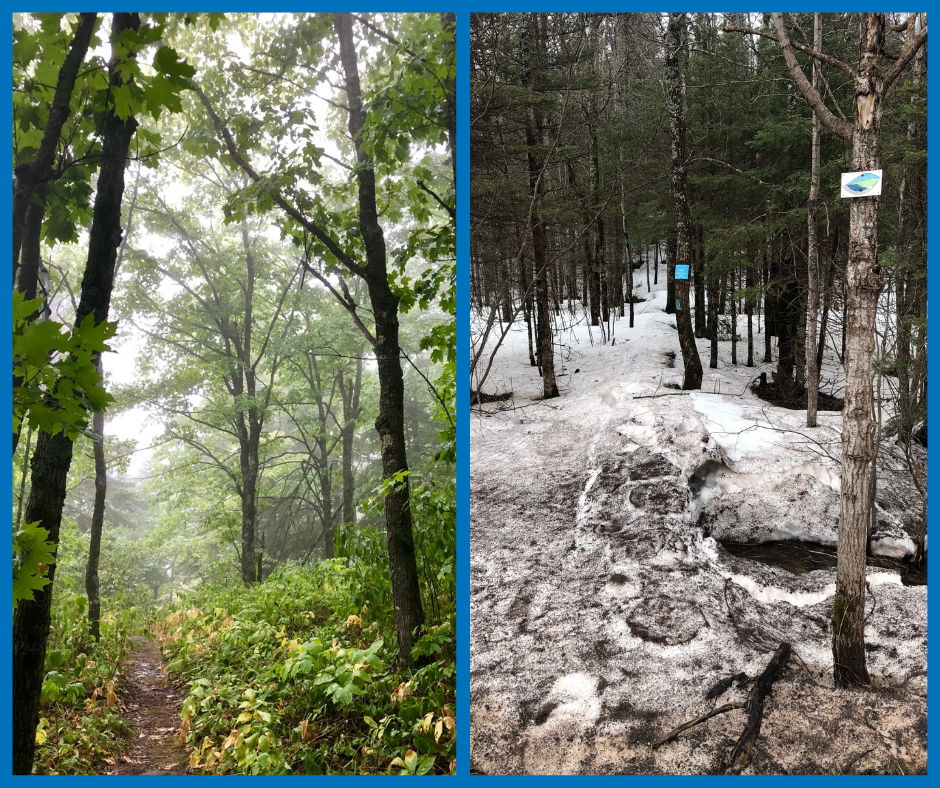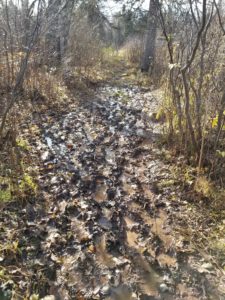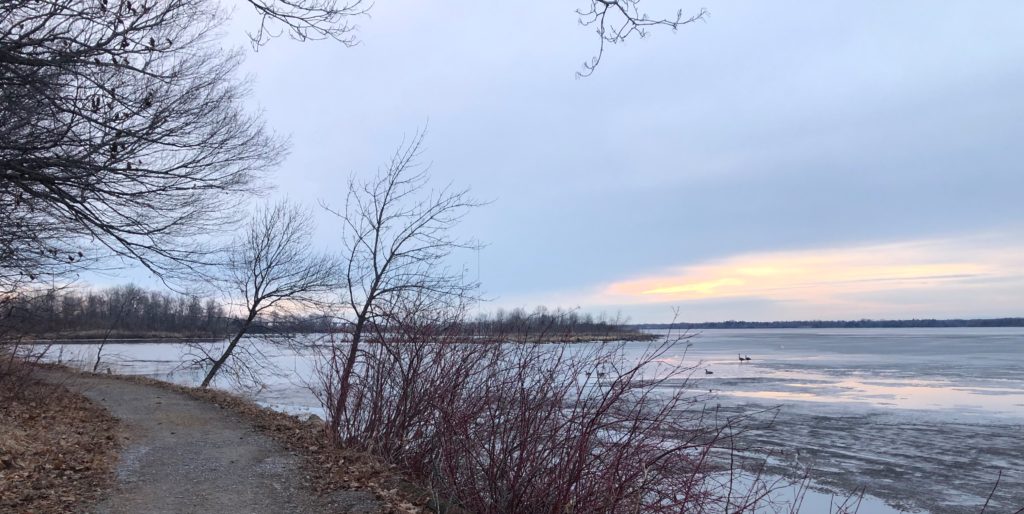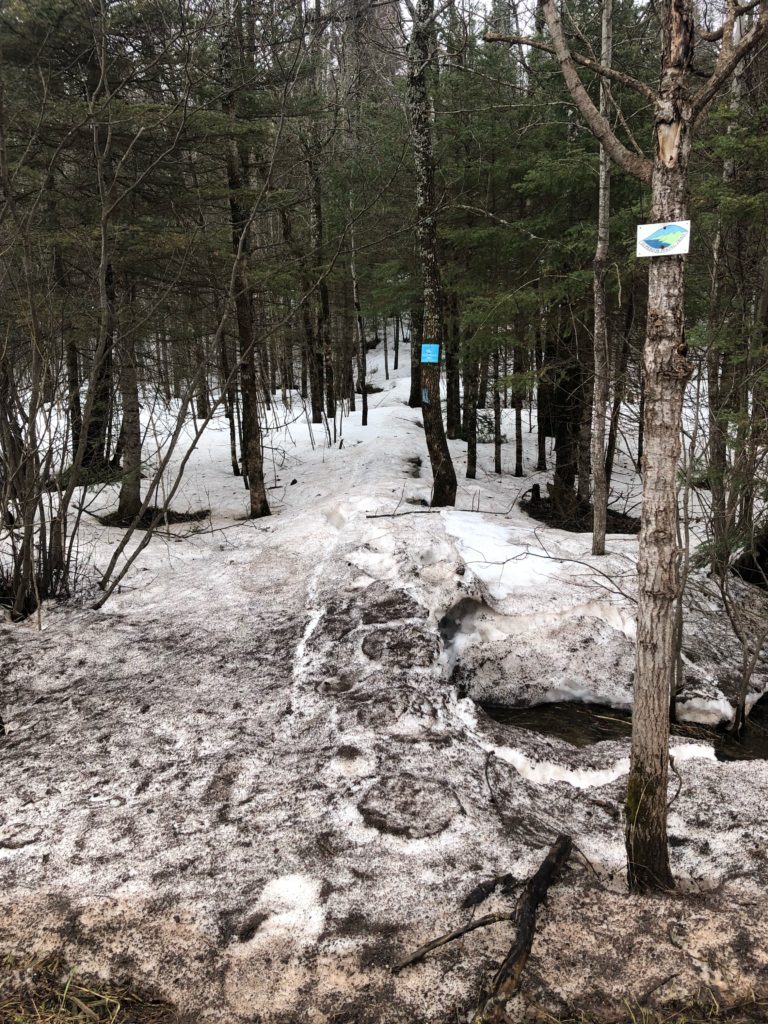Best practices during spring melt season
April 28, 2022
Will winter ever end?

We promise, eventually winter will end. Spring will burst forth in riotous beauty. Waterfalls will roar, spring ephemerals will bloom, and the intoxicating perfume of green returning to the forest will rise into the air. And we will want to get out there and hike!
Yet spring is when the SHT is most susceptible to damage, even by well-intentioned hikers, backpackers and runners.
The Science of Thawing Soil

When the 1-3 feet of winter snowpack finally melts and spring rainstorms start to shower down, the SHT will become saturated. The Trail turns into mud on top, but can still be frozen further down. When our foot strikes the tread, we can cause immediate erosive damage. Trying to go around mud also causes damage, tramples vegetation and widens the Trail corridor.
Through our Trail Renewal Program, we are continually working to reroute problem spots on the Trail to drier land, install boardwalks, and improve water draining off of the trail more quickly. But the SHT will always be wet and vulnerable to damage in the spring.
In Duluth, all natural surface trails in the city closed April 6 to protect them during spring melt. North of Duluth, we don’t close the Trail for a variety of reasons but we are asking our Trail community to follow these suggested best practices during spring melt season.
Simple Steps to Protect the SHT
Day Hikers and Runners
Day hikers and runners have the most flexibility with Trail use plans. If you get on the SHT and find yourself in a wet or muddy area, please turn around.
- Hike or run the other sections where you know the Trail is drier.
- Wait to hike or run saturated sections until they’ve dried out or thawed. Trail Stewardship Director Mackenzie Hogfeldt says when the forest starts greening up, it’s a good signal that the soil is no longer frozen.
- Consider hiking or running on gravel or paved trails that aren’t damaged during spring melt conditions:
- In Duluth, try the Campus Connector Trail between St. Scholastica and UMD along Tischer Creek, Cross-City Trail from Bayfront Park through Lincoln Park, Duluth Lakewalk, the Duluth Winnipeg and Pacific Railway (DWP) Trail and Waabizheshikana (formerly known as the Western Waterfront Trail).
- Along the Northshore, try the Gitchi-Gami Trail, state and national forest roads.

Section-Hikers and Thru-Hikers
Once the snow is clear from the Trail, the sections north of Duluth will go through their spring melt phase. Although the Trail does not close north of Duluth, we ask section- and thru-hikers to hold off on scheduling trips until the Trail has a chance to dry. We ask anyone who already has an overnight hike planned to alter their plans, if possible.
- Watch our Trail Conditions Page for updates.
- Watch the Minnesota DNR’s Snow Depth Map and Ice Out Map for indications that the Northwoods are finally thawing out.
- Switch your planned SHT trip to a southern section of the SHT or another backpacking trail further south where spring melt has already occurred.
- If you can’t reschedule a planned trip, when you reach a muddy stretch, please stay on the tread and go straight through the mud to cause the least amount of impact.
- Follow Leave No Trace principles.
Current Trail Conditions

Anyone planning a trip on the Trail north of Duluth from now through mid-May should be prepared for winter conditions.
The 10-day forecast as of April 28 along the Trail (Northern end to Southern end) is predicting overnight temperatures below or near freezing, and 30 or 40 degrees for daytime highs. The National Weather Service in Duluth is predicting May will be colder than average, which could slow the snow melt.
SHTA Trail Operations Director Tamer Ibrahim reports there are still 2-3 feet of snow up near Grand Marais, even on southern-facing slopes with good sunshine, which usually melt first. Tamer says there is likely even deeper snow in the valleys or shaded areas of the forest. Just north of Duluth, there are also still 6 inches to two feet of snow on the Trail.
Spring snowpack can turn mushy fast. What were packed, frozen trails during winter soften up and even snowshoes may not help. Post-holing through a 50-mile backpacking trip or thru-hike can be pure misery. If you’re hoping for a warm, sunny, green hike, our advice is to wait until June.
Although spring is slow to arrive on the Northshore this year, the slow-warm up and slow snow melt may aid the forest’s recovery from two years of drought. According to the National Weather Service, even with our high snow falls this year, precipitation in the Northwoods is still 11 inches behind average before we get back to normal. One of the best parts of backpacking is learning to live in harmony with nature. Although it may be frustrating to get a slow start to the backpacking season, it will be good for the forest we love.
